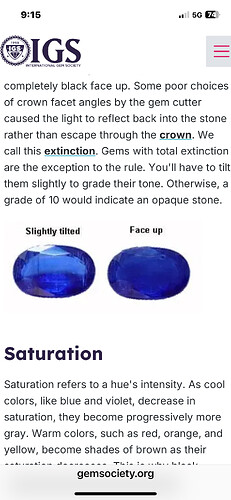Extinction (the course states) is that the stone is black viewing the able face up. In the example, however, the stone is not black, it’s very dark. So now I’m confused as to what exactly extinction looks like. Can somebody elaborate on this? Thank you
Hello Matthew,
“Extinction” is defined as poor cutting causing light to reflect back into the stone rather than escape through the crown. In extreme cases, or cases of “total extinction,” the stone will appear black. However, not every case of extinction is total.
I have slightly rewritten the paragraph in question to make this clearer:
Some poor choices of crown facet angles by the gem cutter may cause the light to reflect back into the stone rather than escape through the crown. We call this extinction. In extreme cases, the stone will become completely black face up. Gems with total extinction are the exception to the rule. You’ll have to tilt them slightly to grade their tone. Otherwise, a grade of 10 would indicate an opaque stone.
Mr. Clark used the best photo he had to illustrate extinction. As you note, the gem is not black when viewed from the table, but it’s quite dark when you compare it to how it looks when tilted. It’s an example of extinction, but not total extinction.
Thank you for your question. I hope this helps clarify the issue.
Pedro
IGS Admin
Thank you very much
